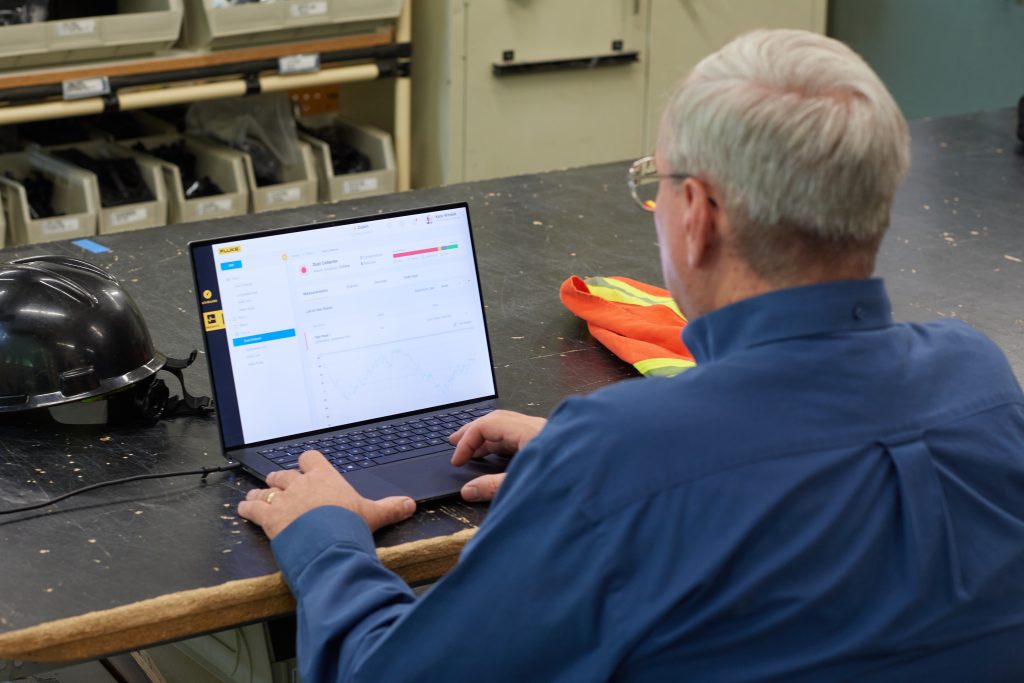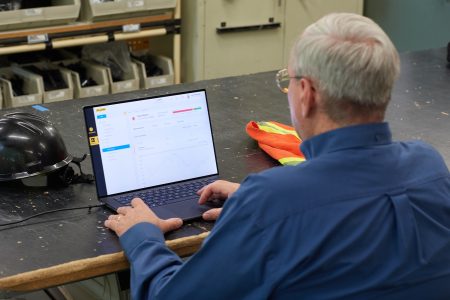
How vibration monitoring can increase uptime in food and beverage manufacturers
Maintenance teams continuously monitor for common equipment faults to catch potential problems before they stop production.
February 2, 2022 | By John Bernet
 Photo provided by Fluke Corporation.
Photo provided by Fluke Corporation. 
Photo provided by Fluke Corporation.
Today, many food and beverage producers are facing heightened pressure to increase uptime. With supply chain issues, increased reg- ulations, and cost reduction and efficiency efforts, there’s a renewed interest in new technologies that can streamline operations.
Even before the COVID-19 pandemic began, a host of Industrial Internet of Things (IIoT) technologies had taken hold in the food and beverage indus- try as a way of increasing uptime. Maintenance and reliability professionals were experimenting with a variety of connected sensors, tools, software, and equipment for remote condition monitoring. However, the past two years have sped up technology adoption.
During the height of the COVID-19 pandemic, nearly 60 per cent of main- tenance teams operated with skeleton crews on site, according to Fluke Reliability surveys. With people working remotely, many maintenance teams
also said they realized they did not have the kinds of connected reliability tools needed to effectively keep machines and equipment in peak condition. By adopting predictive maintenance practices, more food and beverage pro- ducers have learned to leverage remote condition monitoring even with more staff working from home.
Amid the renewed interest, remote condition monitoring sensors, and vibra- tion sensors in particular, have been among the most discussed IIoT tools. Vibration sensors are relatively easy to install, and they offer accurate data with minimal upkeep. They also build on concepts long familiar in maintenance.
THE NEED FOR VIBRATION MONITORING
While the technology behind the latest IIoT sensors may be new, the interest in vibration as a way of increasing reliability is not. From stethoscopes to hand- held vibration meters, maintenance leaders have long known that vibration anomalies are one of the first signs of a pending machine fault. In rotating equipment, vibration changes often accompany common faults like mis- alignment, looseness, bearing wear or imbalance. If left unchecked, abnormal machine vibration can cause operational problems and severe damage in common food and beverage manufacturing assets like drive motors and driven devices.
However, it’s difficult to catch subtle changes in vibration in the traditional handheld vibration measurement tools maintenance teams have used in the past. With continuous monitoring, that drive for non-stop data has fueled the adoption of wire- less IIoT sensors as a way to better understand when repairs are needed.
Wireless vibration sensors generate signals from where they’re mounted on machines, then use net- work connections like Wi-Fi, LTE, or ethernet to transmit real-time data to software. Maintenance teams use the asset management software to trend and analyze data. Depending on the vibration sen- sor’s capabilities, it might detect, analyze, and even diagnose machine faults. These vibration measure- ments are used to monitor the health of rotating machinery like compressors, pumps, belts, gears, shafts, bearings, and other components that make up a mechanical system.
Today, there are two approaches to vibration monitoring; high level screening and deeper level data analysis. Vibration analysis sensors monitor critical machines with bursts of high-resolution data, and they let maintenance teams conduct vibration analysis for the most common machine faults. In contrast, vibration screening sensors are more scalable and require very little training, but detect basic machine health, like whether the asset is doing good or bad.
In both cases, when wireless vibration sensors detect changes that exceed predetermined threshold levels, it automatically sends an alert to the maintenance team so they can decide if maintenance is required.
Some wireless sensors also send data to broader maintenance software, like a computerized maintenance management system (CMMS), where the data can be incorporated into daily operations.
The legacy food processor had much more equip- ment coming in, so the maintenance team knew they needed to step up their broader condition monitoring program to avoid unscheduled down- time. If the equipment goes down while cheese is being made, it stops production and becomes a costly problem.
To move from preventive maintenance to predictive maintenance, they installed continuous condition monitoring technology on all production equipment and used the alarm notification capabilities to receive immediate alerts when equipment conditions change. In particular, the company puts heightened focus on monitoring the health and wear of critical bearings. By installing wireless screening vibration sensors, they can now monitor for excess vibration and heat.
Beyond increasing uptime, the wireless sensors helped reduce maintenance routes and extend asset life. By integrating the sensors with their CMMS, they were also able to automatically pro- duce work orders.
Like this cheese manufacturer, other food and beverage producers around the world are going through a similar reliability journey toward increased predictive maintenance. By combining condition monitoring sensors and asset management software with other IIoT solutions, maintenance leaders are helping their organiza- tions compete in today’s changing landscape.
